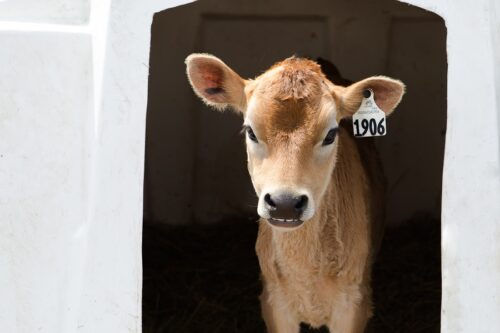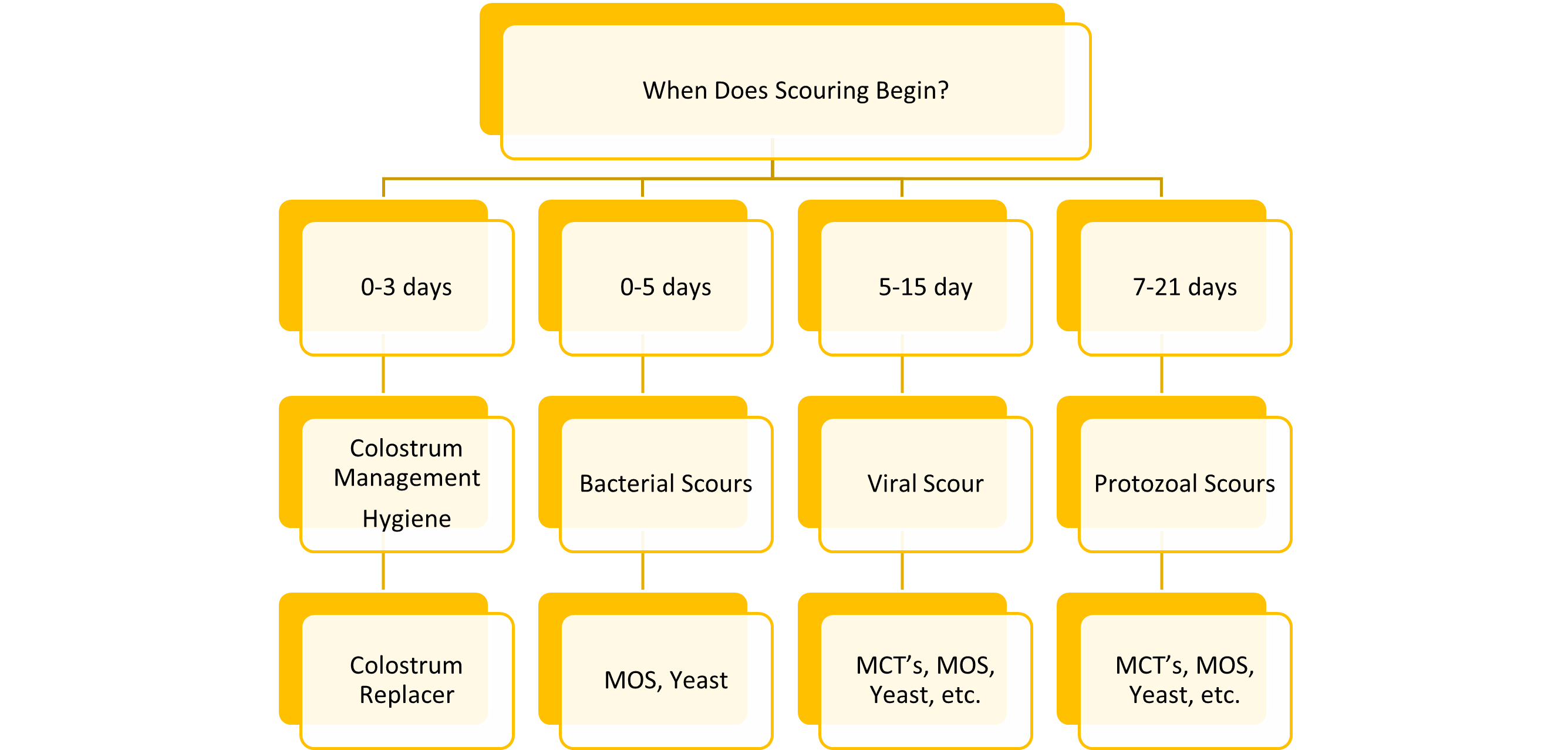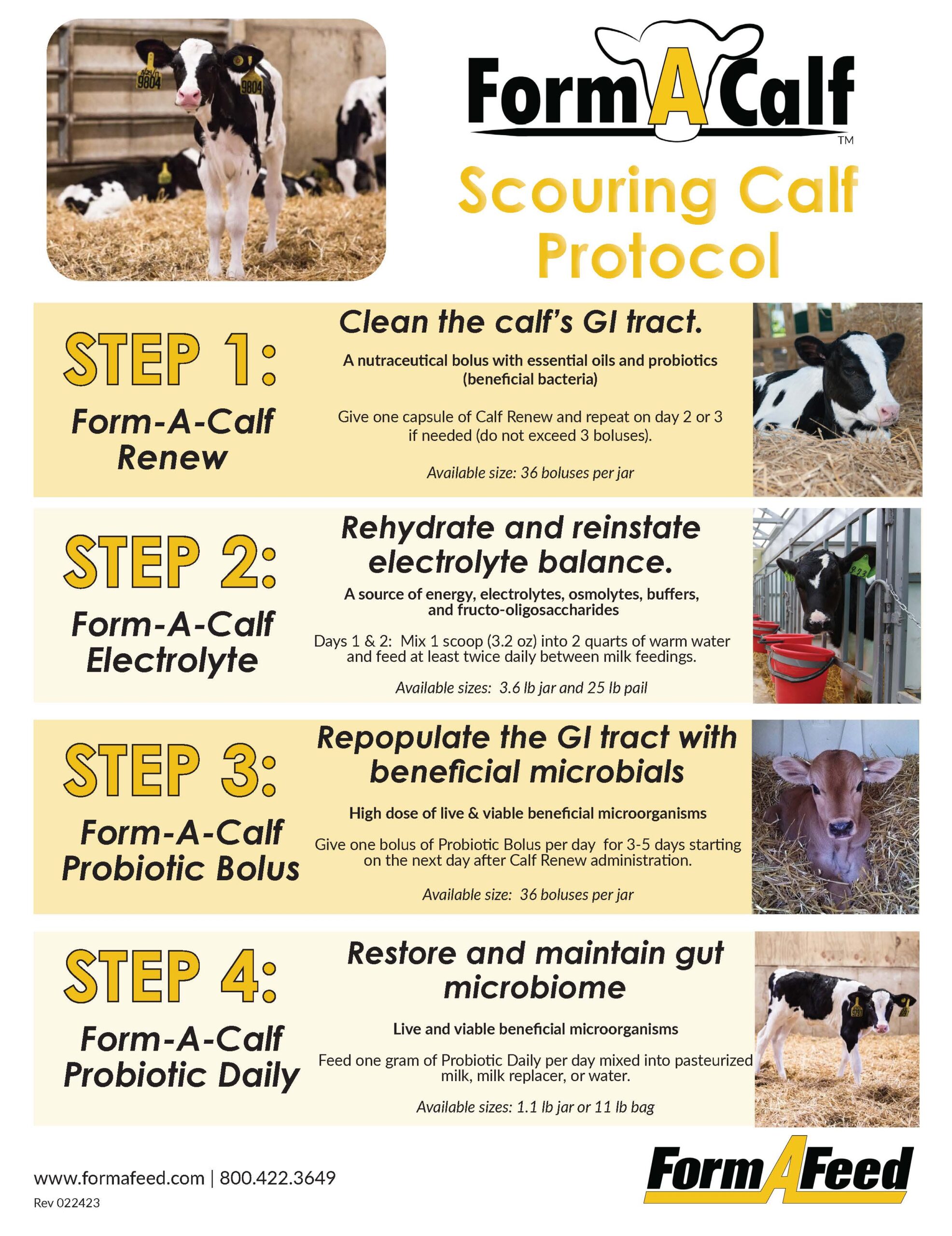Common Problems that Challenge Your Calf Program When Protocols Drift
Posted: May 30, 2023 | Written By: Mario Solis Flores, Form-A-Feed

When protocols deviate, many daily situations will negatively affect calf health. The biggest question is how to avoid those deviations. The first thing we must understand is how the immune system of a newborn calf develops. When the calf is born it is reliant on maternal immunity from colostrum. It takes about 21 days to develop its own active immune system. Depending on how well we process colostrum, we can impact a calf in a positive or negative way. Quality, quantity, and timing of feeding the colostrum will determine the calf’s performance and ability to fight infection in the next 14 days of life.
Proper protocols are crucial. When protocols drift, the calf is much more susceptible to facing the following common calf problems:
SCOURS
While the calf is trying to develop its own immune system, we also try to convert the calf from a monogastric to a ruminant. In this period, disease pressure is at its highest. The most common disease during this time is scours. In the first five days after birth, we can think of septicemia as more likely to be caused by gram negative bacteria such as salmonella or E. coli. After the first five days, the most common scours can be attributed to the environment where calves are being raised. Some of the most common organisms are Clostridiums, rotavirus, coronavirus, and Cryptosporidium.
PNEUMONIA
Pneumonia after 14 days can be a challenge due to ventilation in enclosed facilities or by moving calves to a different hutch. During this period, some prevalent bacteria include Pasteurella, Mycoplasma, Hemophilus, BVD, and IBR.
The main sources of bacteria in the first five days of life can be discovered by evaluating the calving environment, colostrum management, and feces. After the first five days, some of the main sources of bacteria are from the environment where the calf is being raised. The main sources of pneumonia come from ventilation, housing, and mixing calves with older cattle.
COLOSTRUM MANAGEMENT
Some of the most critical aspects of colostrum management that need to be addressed include cleanliness in the collecting equipment, contamination of colostrum with manure, containers with buildup of biofilm, and equipment not being fully dried. Quality should be checked with a refractometer to ensure adequate solids and IgG content. We recommend a quantity of 4 quarts within the first 2-4 hours of life.
NAVEL INFECTIONS
In the first few days of life, navel infections are a concern in some operations. This is most likely due to the lack of correct application of drying agents at the base of the navel and at the tip of the navel. A properly dipped navel should be completely covered with dip as soon after birth as possible to limit pathogens entering the blood stream. A second dipping within the first 12 hours of life will increase prevention of disease.
CALVING AREA CLEANLINESS
Calving areas can be deceiving at times, depending on the amount of fresh bedding. Inadequate dry bedding on top of a wet pack can disguise a dirty base that contains high pathogen loads. Make sure the first air a calf intakes is not loaded with disease.
FEEDING INCONSISTENCIES
There are different ways to feed calves. One option is to use whole milk. A second option is to use just milk replacer, while some operations use a combination of whole milk and milk replacer. Within the milk replacer category there are multiple philosophies on amounts of powder and nutrient content. Regardless of how you are raising calves, the main goal is to raise a large, healthy calf with a fully developed rumen.
From time-to-time, feeding amounts become a problem when multiple people are feeding calves and not all of them are well informed on how to feed calves. When people don’t know how much milk to feed a calf based on the stage of growth, feed wrong amounts to all calves, ramp calves on milk too soon, or wean calves without the proper transition, inconsistencies will negatively influence the calf.
In liquid feeding, departure from protocols can lead to lung damage on calves when tubing calves or by using worn out feeding nipples with big holes in the tip. Delivering milk at the proper temperature (105°F) and mixing milk replacer with proper temperatures can be challenging during winter, creating problems in calves like bloats and scours.
What happens when protocols deviate?
There are many feed technologies available to reduce some issues when protocols deviate. When the problem becomes pathogenic and not just management related, additives can help improve calf health. Some of those feed technologies are probiotics, medium chain triglycerides (MCT), antioxidants, chelated zinc, essential amino acids, mannan oligosaccharides (MOS), and yeast culture.
Below is a quick example of a Daily Wellness Plan for calves showcasing when to use those feed technologies.
Form-A-Feed recommends following a scouring calf protocol to help the calf combat a clinical scours issue.
Learn more about the Form-A-Calf program.
At birth we can influence calves in many ways, sometimes in a positive way and other times in a negative way. Remember to always review your feeding amounts and feeding schedules and take advantage of using feed additives to minimize some common calf programs. Things will never be perfect in any operation, but always be sure to monitor field applications of your protocols to set your calves up for success!
If you have questions about your calf protocol, or need help establishing one for your operation, please reach out to your Form-A-Feed representative to get your calves on the right track!

